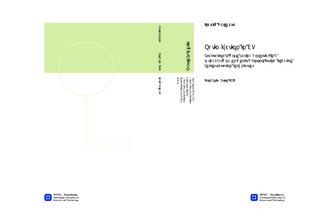| dc.contributor.advisor | Lindmo, Tore | nb_NO |
| dc.contributor.advisor | Bolstad, Kirsten | nb_NO |
| dc.contributor.author | Dalehaug, Ingvild | nb_NO |
| dc.date.accessioned | 2014-12-19T13:18:54Z | |
| dc.date.available | 2014-12-19T13:18:54Z | |
| dc.date.created | 2013-09-19 | nb_NO |
| dc.date.issued | 2013 | nb_NO |
| dc.identifier | 649688 | nb_NO |
| dc.identifier | ntnudaim:9957 | nb_NO |
| dc.identifier.uri | http://hdl.handle.net/11250/247036 | |
| dc.description.abstract | The use of computed tomography (CT) has increased dramatically during the last two decades and contributes today to 80% of the estimated population dose caused by radiological examinations. Recent publications have shown an increased incidence of cancer caused by the irradiation from CT examinations and has led to increased dose awareness.In this study the dose saving potential for a thorax-abdomen/pelvis protocol on a Siemens SOMATOM Definition AS + (Siemens, Germany) was investigated. The main aim was to reduce the dose to the patient while maintaining similar image quality as the current scan protocol. Alternative reconstruction filters and using iterative techniques where applied to lower dose scans of a Catphan 600 phantom (Siemens Germany). Physical and objective image quality parameters, in this case the spatial resolution, noise and noise power spectrum (NPS) curves were measured in the lower dose scans of Catphan 600 and compared to the spatial resolution, noise and NPS measured in the current scan protocol. The parameter settings resulting in similar objective image quality where applied to scans of an anthropomorphic phantom. Signal to noise ratio (SNR) and contrast to noise ratio (CNR) where calculated and compared to SNR and CNR of the current scan protocol. The final best lower dose alternatives where presented for experienced radiologists for subjective evaluation.Physical image quality parameters such as spatial resolution, noise level, SNR and CNR were found to be maintained down at 50% dose level. However, the NPS curves revealed some minor shift in spatial distribution of the noise towards coarser graininess at the highest iterative strengths. The experienced thorax radiologist qualified all lower dose alternatives presented as diagnostically acceptable. The experienced gastro radiologist evaluated the scans reconstructed with a higher iterative level than 2 as blotchy and not diagnostically suitable. The observed blotchiness may have a correlation with the minor shift in NPS curves.In conclusion, a dose level of 75% (i.e. 25% lower dose than the current scan protocol) using higher iterative strength was found to be diagnostically acceptable and can be further explored on patients. | nb_NO |
| dc.language | eng | nb_NO |
| dc.publisher | Institutt for fysikk | nb_NO |
| dc.title | Optimization in CT: Evaluation of dose saving potential in a thorax-abdomen/pelvis protocol using iterative reconstruction techniques | nb_NO |
| dc.type | Master thesis | nb_NO |
| dc.source.pagenumber | 75 | nb_NO |
| dc.contributor.department | Norges teknisk-naturvitenskapelige universitet, Fakultet for naturvitenskap og teknologi, Institutt for fysikk | nb_NO |

